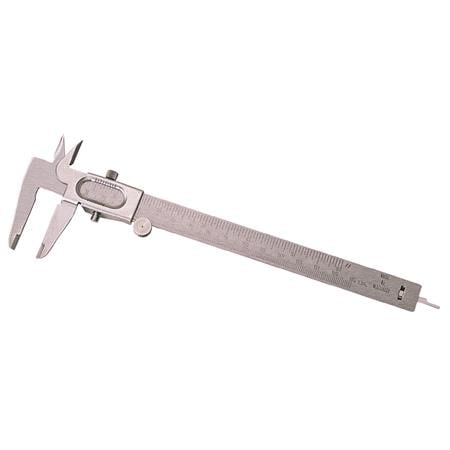Hello,
I have decided to buy dial calipers. I had cheap digital calipers in the past, but they were constantly resetting themselves or showing random numbers and as I do not have heated workshop, the battery life during cold months was also low. Then I bought vernier calipers. They are foolproof, but it takes me a long time to read the scale, especially if I want to take readings at multiple places in quick succession.
I use calipers e.g. when I am thicknessing by hand and I go below a mark at a certain area. It is quicker for me to make the board 0.2 mm thinner and check with calipers than to rescribe a new line around the board.
Do you have experience with dial calipers? Are they reliable and should I choose 150 mm or 200 mm version (6 or 8 inch)? I know that bigger is better, but sometimes I just don't want to use a tool often, because it is too big in the hand and it is not comfortable to use. I have made 800 mm panel gauge, and immediately I realized that I want to make a smaller version as well , as this one if too big to use comfortably.
Thank you.
I have decided to buy dial calipers. I had cheap digital calipers in the past, but they were constantly resetting themselves or showing random numbers and as I do not have heated workshop, the battery life during cold months was also low. Then I bought vernier calipers. They are foolproof, but it takes me a long time to read the scale, especially if I want to take readings at multiple places in quick succession.
I use calipers e.g. when I am thicknessing by hand and I go below a mark at a certain area. It is quicker for me to make the board 0.2 mm thinner and check with calipers than to rescribe a new line around the board.
Do you have experience with dial calipers? Are they reliable and should I choose 150 mm or 200 mm version (6 or 8 inch)? I know that bigger is better, but sometimes I just don't want to use a tool often, because it is too big in the hand and it is not comfortable to use. I have made 800 mm panel gauge, and immediately I realized that I want to make a smaller version as well , as this one if too big to use comfortably.
Thank you.
Last edited:







